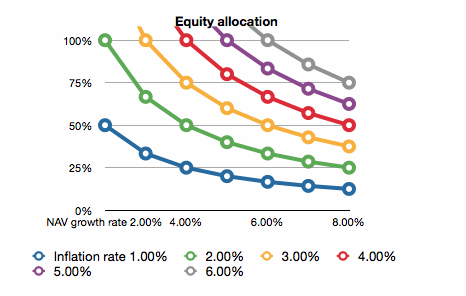IndependentlyPoor
Thinks s/he gets paid by the post
I know that I am a conservative investor, but I was surprised at what large equity percentages Firecalc seems to favor. I made Firecalc runs assuming a million dollar portfolio, 40 year period, and everything else default except I varied the percentage equities.
The first plot shows success rates for 3.0, 3.5, 4.0, 4.5, and 5.0 percent withdrawal rates for various asset allocations. (I see that the 40/60 line vanished when I converted to GIF format, but never mind.)
The trend with respect to the withdrawal rate makes sense. Take out more money and risk running out. The trend with respect to asset allocation seems to indicate that more equities are always better.
The second plot makes the trend with respect to asset allocation more clear. It shows the success rate for the 4.0% withdrawal rate plotted against percentage equities. This seems to indicate that retirees should be 100% in stocks, maybe even 110% stocks.
I was expecting a sweet spot, a maxima in the second plot. Have I missed something?
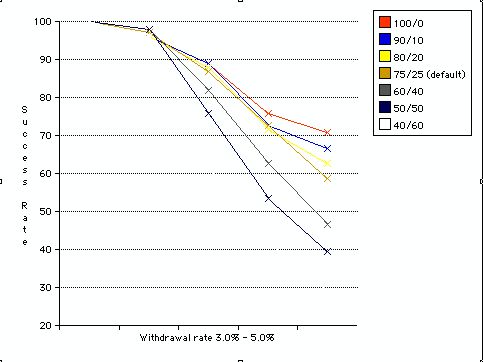
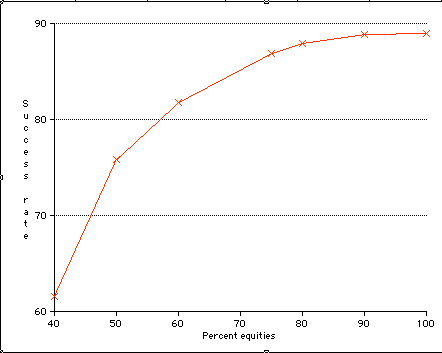
The first plot shows success rates for 3.0, 3.5, 4.0, 4.5, and 5.0 percent withdrawal rates for various asset allocations. (I see that the 40/60 line vanished when I converted to GIF format, but never mind.)
The trend with respect to the withdrawal rate makes sense. Take out more money and risk running out. The trend with respect to asset allocation seems to indicate that more equities are always better.
The second plot makes the trend with respect to asset allocation more clear. It shows the success rate for the 4.0% withdrawal rate plotted against percentage equities. This seems to indicate that retirees should be 100% in stocks, maybe even 110% stocks.
I was expecting a sweet spot, a maxima in the second plot. Have I missed something?



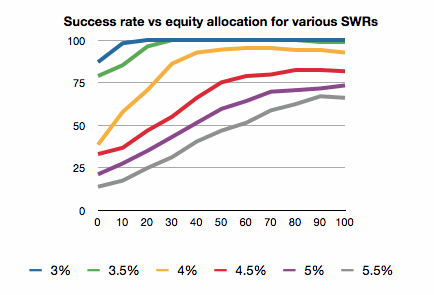
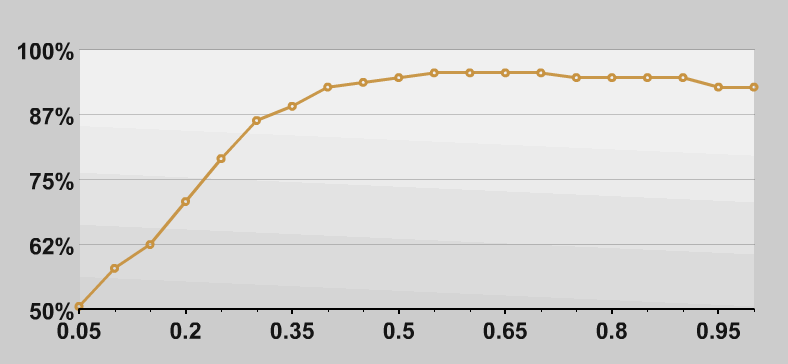
 Actually, that was really, really bad wording. I should have said that my asset allocation ended-up on the knee of the curve. I arrived at that allocation by finding the minimum bond allocation that could fund our expenses through interest in dividends alone. For us, that ended up 60% bonds.
Actually, that was really, really bad wording. I should have said that my asset allocation ended-up on the knee of the curve. I arrived at that allocation by finding the minimum bond allocation that could fund our expenses through interest in dividends alone. For us, that ended up 60% bonds. 